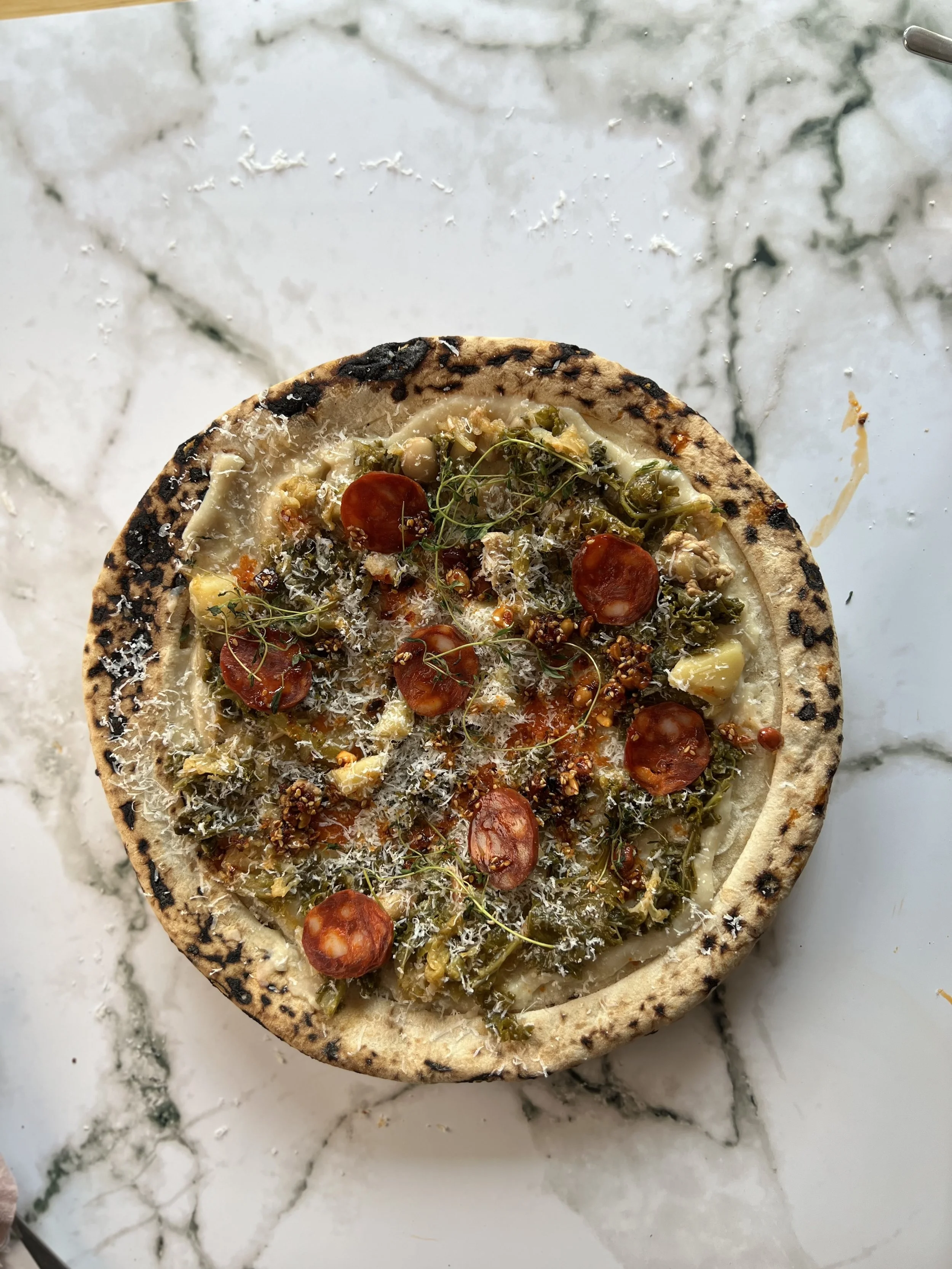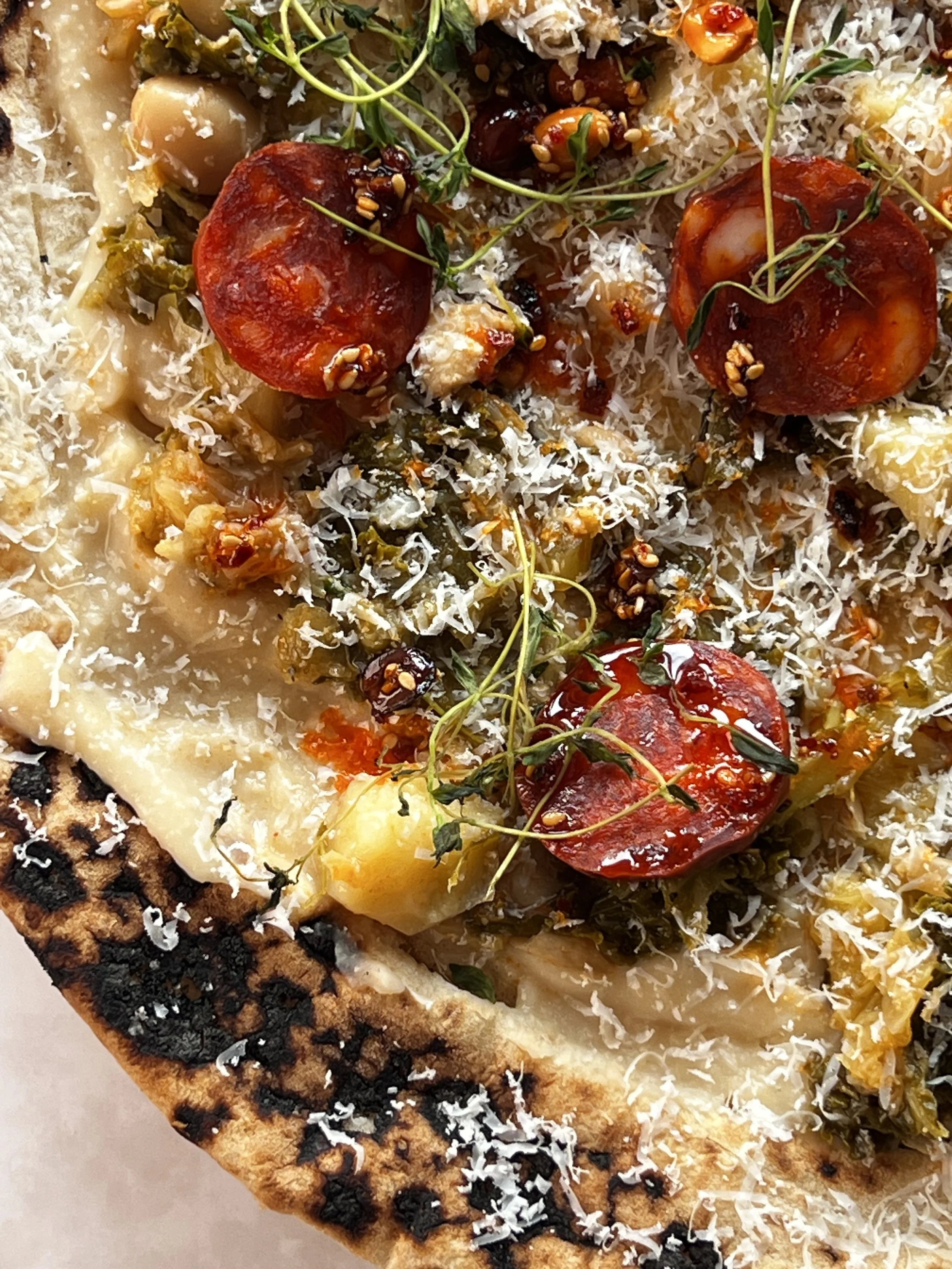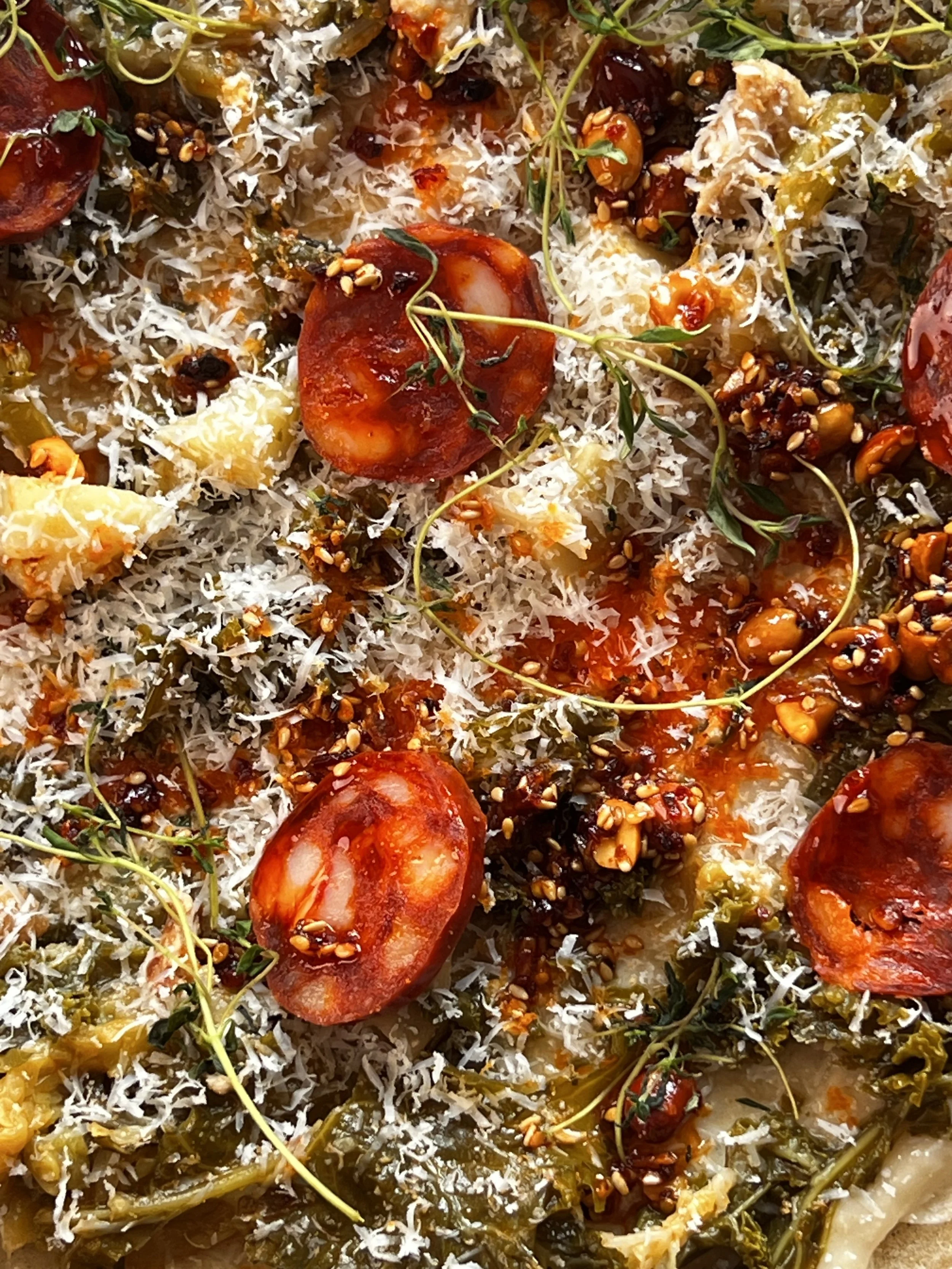From Kitchen Scraps to Signature Pizza: The Ribollita Revolution in Commercial Recipe Development
How vegetable-forward menu engineering turns waste into profit
You're throwing away perfectly good vegetables while buying expensive toppings for pizza?
That's not just wasteful - it's bad commercial recipe development.
This ribollita-inspired pizza proves you can create signature menu items from "leftover" vegetables while building a sustainable food formulation services system that reduces waste and increases margins.
The secret isn't finding new ingredients. It's engineering traditional techniques for modern commercial applications.
The Recipe Engineering Behind Vegetable-Forward Pizza
Every successful pizza menu development project should ask: How can we maximize ingredient utilization while creating unique customer experiences?
This ribollita pizza solves three commercial problems simultaneously:
Reduces vegetable waste through systematic reuse
Creates dairy-free base options without sacrificing richness
Builds cultural authenticity that differentiates your menu
The Foundation: Bean Base Innovation
White Cannellini Bean Purée This isn't just avoiding mozzarella - it's recipe engineering for better moisture control and protein content. The bean base provides:
Consistent moisture distribution without dairy separation
Higher protein content than traditional cheese bases
Natural thickening that prevents vegetable water release from making crusts soggy
Commercial Scaling Benefits:
Beans store longer than fresh dairy
Purée can be batch-prepared and portioned
Consistent texture across different cooking staff skill levels
Vegetable Preparation: Steam-and-Dress Technique
Steamed Vegetable Integration Kale, potatoes, and cabbage are steamed separately, not roasted together. This food formulation services approach controls:
Individual vegetable cooking times for optimal texture
Color retention that survives commercial holding periods
Moisture content that won't compromise crust integrity
Post-Steam Oil Application Extra virgin olive oil applied after steaming, before pizza assembly. This technique:
Preserves oil quality and flavor compounds
Prevents burning during high-heat pizza baking
Creates proper fat distribution for mouthfeel
The Cultural Fusion Element: Chorizo Integration
Strategic Spice Addition Spanish chorizo isn't traditional ribollita, but it solves a commercial problem: how to add umami and heat without overpowering the vegetable-forward concept.
For Vegetarian Operations: The base recipe works perfectly without chorizo, proving your menu development services can adapt to different dietary requirements without recipe reconstruction.
Commercial Recipe Development Applications
For Restaurant-Pizzeria Operations: Your daily vegetable prep creates tomorrow's pizza ingredients. Steamed vegetables from lunch service become evening pizza components. This isn't just sustainability - it's profit optimization through recipe engineering.
Prep Integration Examples:
Steamed kale from salad prep → pizza component
Potato prep overflow → ribollita pizza base
Cabbage trimming → steamed pizza topping
For Standalone Pizzerias: Source seasonal vegetables in volume, prep systematically, create rotating seasonal pizza offerings based on availability and cost.
The Sous Vide Alternative
Vegetable Consistency Control: Steam techniques adapt perfectly to sous vide applications:
85°C for precise texture control
Extended holding capability for high-volume service
Consistent results regardless of staff experience
Scaling for Volume: Sous vide vegetable prep creates commercial recipe development opportunities for high-volume operations needing consistent vegetable texture and color.
Menu Development Services Strategy
Seasonal Menu Integration: This technique framework adapts to any seasonal vegetable combination:
Spring: asparagus, peas, early greens
Summer: zucchini, peppers, tomatoes
Fall: squash, Brussels sprouts, root vegetables
Winter: hearty greens, stored beans, preserved vegetables
Cultural Adaptation Opportunities:
French: ratatouille vegetables with herbes de Provence
Asian fusion: steamed bok choy, shiitake, ginger oil
Mexican: poblanos, corn, black beans with chipotle
Restaurant Video Production Considerations
Visual Appeal Elements:
Vibrant green kale against white bean base
Golden potato contrast
Pecorino Toscano finish for color pop
Steam prep process shows freshness and technique
Story Elements for Video:
Waste reduction narrative
Traditional technique adaptation
Seasonal ingredient showcase
Behind-the-scenes prep integration
Pizza Menu Development Scaling Principles
Ingredient Utilization Mapping: Document which restaurant prep items translate to pizza components:
Protein braising liquids → pizza sauce bases
Vegetable trimmings → steamed topping preparation
Cheese aging → strategic pizza applications
Cost Engineering: Vegetables cost significantly less than premium proteins or imported cheeses, but proper technique makes them taste expensive. Your food formulation services create perceived value through execution, not ingredient cost.
Commercial Recipe Development Lessons
Technique Transferability: The steam-and-dress technique works for any vegetable combination. You're not selling one pizza recipe - you're providing a systematic approach to vegetable-forward pizza menu development.
Cultural Authenticity: Ribollita represents Italian resourcefulness with ingredients. This pizza honors that tradition while adapting to modern commercial requirements.
Operational Efficiency: One prep technique serves multiple menu applications. Steamed vegetables work for salads, sides, and pizza toppings from the same base preparation.
Sustainability Meets Profitability
Waste Reduction Impact: Restaurants typically discard 20-30% of vegetable purchases. This system redirects "waste" into profit-generating menu items.
Margin Improvement: Vegetable-based pizzas maintain similar pricing to meat/cheese versions while significantly lower ingredient costs create improved margins.
Customer Appeal: Plant-forward dining continues growing. This technique creates vegetable-rich options that satisfy both vegetarian customers and omnivores seeking lighter alternatives.
Recipe Engineering for Real Kitchens
Staff Training Simplification: Steam vegetables, dress with oil, assemble on bean base. Three clear steps that reduce training time and execution errors.
Equipment Integration: Uses standard commercial kitchen equipment (steamers, mixers for bean purée). No special equipment purchases required for implementation.
Quality Consistency: Controlled techniques produce consistent results regardless of seasonal vegetable variations or staff turnover.
The Innovation Lesson
While competitors add more cheese and call it "loaded," you're proving that menu development services based on traditional techniques create better customer experiences and improved profitability.
This ribollita pizza demonstrates that innovation doesn't mean abandoning tradition - it means understanding why traditional techniques work and adapting them for modern commercial success.
For Food Service Professionals: Every "waste" stream in your kitchen represents a commercial recipe development opportunity. The question isn't whether you can afford to implement sustainability practices - it's whether you can afford not to.
For Menu Consultants: Client success comes from systems that improve both customer satisfaction and operational efficiency. This vegetable-forward approach delivers both while reducing environmental impact.
Your Kitchen, Your System
This isn't about copying a ribollita pizza. It's about understanding that successful food formulation services turn operational challenges into competitive advantages.
Whether you're developing plant-forward menus, reducing food waste, or creating seasonal offerings, the principle remains: engineer solutions that solve multiple business problems simultaneously.
The difference between recipe development and recipe engineering? Engineering creates systems that improve your entire operation, not just individual menu items.



